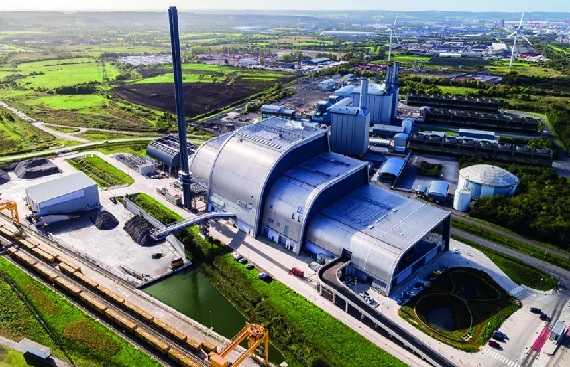Exploring the Potential of Carbon Capture and Utilization in Building a Sustainable Future

In the face of escalating concerns regarding global climate change and the urgent need to mitigate its impacts, innovative strategies are emerging to combat the excessive emission of greenhouse gases, particularly carbon dioxide (CO2), into the atmosphere. Among these strategies, Carbon Capture and Utilization (CCU) have received significant attention as an economical way of simultaneously solving environmental and economic challenges. CCU involves the capture of CO2 emissions from various industrial processes and sources, followed by their conversion into valuable products or feedstock that can be utilized in a range of industries. This symbiotic concept not only helps reduce the concentration of CO2 in the atmosphere but also contributes to developing a more sustainable and circular economy. The implementation of CCU technologies represents a bridge between the pressing need to reduce carbon emissions and the demand for novel, sustainable materials, and fuels. By harnessing the power of CCU, industries have the potential to transform CO2 from a waste byproduct into a valuable resource, thus shifting the narrative around carbon emissions from a liability to an opportunity.
From enhanced oil recovery and the production of chemicals, polymers, and building materials to the creation of renewable fuels and energy storage solutions, the possibilities of CCU are far-reaching and offer a multidimensional approach to tackling the climate crisis. This introductory exploration into CCU delves into its fundamental principles, underlying technologies, current advancements, and potential challenges. By highlighting the numerous uses and advantages of CCU, we hope to offer a thorough overview of this novel approach and its crucial role in establishing a more sustainable and ecologically conscious future.
Overview of carbon capture techniques (chemical, physical, biological)
Carbon Capture and Utilization involves capturing carbon dioxide (CO2) emissions from industrial processes, power plants, and other sources and then converting them into valuable materials or energy sources instead of releasing them into the atmosphere. This method impacts greenhouse gas emissions and offers business opportunities by creating new markets for carbon-based products. CCU uses a variety of ways to reduce CO2 emissions. These approaches fall into three categories: chemical, physical, and biological. Chemical operations use absorption processes, in which materials or solvents absorb CO2 to create chemicals that may be separated from and utilized later. Physical methods rely on separating CO2 from gas mixtures using pressure swing adsorption or membrane separation. Biological processes use microorganisms to convert CO2 into valuable products, such as biofuels or biochemicals.
Converting Captured Carbon into Valuable Products
One of the most exciting aspects of CCU is the ability to convert captured carbon into valuable products. Chemicals, fuels, building materials, and even food products can be made from CO2, among other things. For example, CO2 can be used as a feedstock to produce synthetic fuels like methane or methanol. Additionally, CO2 can be mineralized to create construction materials like concrete, offering a sustainable alternative to traditional cement production.
Recent technological advancements have significantly improved the efficiency and feasibility of CCU processes. Innovative catalysts and electrochemical processes have enabled the conversion of CO2 into higher-value chemicals, making the utilization of captured carbon more economically viable. Moreover, advancements in materials science have led to the development of more effective absorbents and membranes for carbon capture, reducing energy consumption and operational costs.
CO2 Transformation for Renewable Fuels
Utilizing captured carbon in renewable energy storage represents a pivotal aspect of Carbon Capture and Utilization (CCU), offering a transformative solution to the challenges of renewable energy intermittency. By capturing excess CO2 from the atmosphere and converting it into renewable fuels such as hydrogen or methane, CCU provides a mechanism for storing energy for future use. This strategic approach mitigates carbon emissions and effectively addresses the variability of renewable energy sources. Moreover, the ascendancy of electrochemical and catalytic processes within the realm of CCU has brought forth efficient means of converting CO2 into valuable products. CO2 can be transformed into various functional molecules using electro catalysis, a process in which electric currents drive chemical processes, including renewable fuels like methane and even higher-value outputs like ethylene and syngas.
Addressing Technological Limitations and Efficiency Improvements
While CCU holds immense potential, it also faces challenges such as high energy consumption, cost, and scalability. Researchers and engineers are actively working to address these limitations by developing more efficient and cost-effective capture materials, optimizing reaction conditions, and exploring novel reactor designs. These challenges will likely be overcome as technology evolves, making CCU a more practical solution.
Several real-world CCU projects are already underway, demonstrating the feasibility and potential of this technology. From large-scale pilot plants capturing CO2 emissions and converting them into building materials to innovative startups producing renewable fuels through electrochemical processes, these projects showcase the diverse applications of CCU across industries. Also, as reported by NITI Aayog on ‘Carbon Capture, Utilisation, and Storage (CCUS) Policy Framework and its Deployment Mechanism in India’ in 2022, India has updated its NDC targets for achieving 50% of its total installed capacity from non-fossil-based energy sources, 45% reduction in emission intensity by 2030 and taking steps towards achieving Net Zero by 2070, the role of Carbon Capture, Utilisation, and Storage (CCUS) becomes important as reduction strategy to achieve decarbonization from the hard-to abate sectors.
At the end, we can examine that CCU is a crucial cornerstone of sustainable technology for combating climate change. CCU mitigates carbon footprints and fosters circular, sustainable economies by capturing and converting carbon dioxide emissions into valuable outputs. As technology advances enhance efficiency and cost-effectiveness, CCU gains prominence, holding a pivotal position in crafting an eco-friendly and enduring future for upcoming generations.
